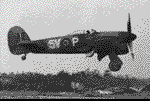
Canada's Role in WWII
From the Beginning...Canada entered the 1939-1945 War on 10th September 1939. Within two months the first contingents of Canadian troops arrived in the United Kingdom to supplement the British Expeditionary Forces (BEF). Forestalled by the evacuation of the British Army from Dunkirk and the Channel ports, Canada's role became one of defence of the British Isles. Far across the globe a small force of Canadians arrived in Hong Kong in time to meet the Japanese invasion, and fought with the British, Indian and Hong Kong forces in defence of the colony until the surrender on Christmas Day 1941. |
 |
DieppeOn l9th August 1942 troops of the Canadian 2nd Division formed the bulk of the Dieppe Raid. Of the 5,000 Canadians who took part, only about 2,000 returned to England: nearly 1,000 had been killed and 2,000 taken prisoner. A further 500 Canadians lost their lives when they landed in Sicily as part of the Eighth Army on 10th July 1943. |
 |
The Cost of BattleOn 3rd September a combined Canadian, British and American force made the first full-scale invasion of mainland Europe, attacking on the 'toe' of Italy and reaching Naples on 1st October. Canadian troops fought at Ortona and Monte Cassino and in May 1944 took part in the costly, but successful, attack on the Hitler line: the first major operation by a Canadian corps in the 1939-1945 War. The battle northwards through Italy continued to the war's end and ultimately cost the lives of nearly 6,000 Canadians.
Landing in Normandy on 6th June 1944 as part of the Allied invasion force, the Canadians played an important role in the battle to take Caen. They then advanced along the French seacoast to the Pas-de-Calais and took Dieppe on 1st September. Canadians fought with British soldiers in the freeing of the Scheldt Estuary and success here enabled the first Allied convoy to arrive in Antwerp in November 1944. Normandy |
 |
Contributions on LandSome Canadian units played a prominent part in the liberation of the Netherlands while others went on to participate in the Battle of Germany. In February 1945 the Canadian First Army attacked in the Reichswald Forest, and helped drive the Germans back across the Rhine; the German forces surrendered to General Montgomery on Luneburg Heath on 5th May 1945. From D-Day to VE Day 12,500 Canadians died. |
 |
Contributions on the SeaDuring the 1939-1945 War the Royal Canadian Navy (RCN) grew to a strength of nearly 100,000 personnel and nearly 400 vessels. Their main duty was to act as convoy escorts across the Atlantic, in the Mediterranean and to Murmansk in the USSR. They also hunted submarines, and supported amphibious landings in Sicily, Italy and Normandy. In all the RCN lost nearly 2,000 sailors. |
 |
Contributions in the AirAlthough a major task of the Royal Canadian Air Force (RCAF) based at home was the hunting of U-Boats in the North Atlantic, its most important area of operations was Europe, where 48 Canadian squadrons served. The scale of their contribution was recognized on 1st January 1943 by the formation of No. 6 Group, an RCAF formation within Bomber Command. Canadian airmen fought in the Battle of Britain, North Africa, Italy and the Normandy invasion. About 17,000 died, the great majority while serving with Bomber Command. |
 |
Published on: 2004-08-05 (42334 reads)
Recent Reviews
- War Horse 2012-01-02
- Legion 2010-01-23
- Zombieland 2009-10-02
- The Martyr's Oath: The Apprenticeship of a Homegrown Terrorist 2009-08-20
- Bachman Cummings 2009-06-22
- Star Trek 2009-05-03
- X-Me Origins: Wolverine 2009-05-01
- Soloist 2009-04-24


